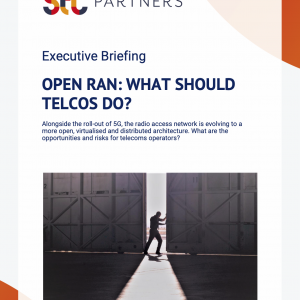Winning Strategies: Differentiated Mobile Data Services
£1,000.00 excl VAT
A small and surprising set of national operators are delivering outstanding performance in the challenging European market. Our analysis shows how they’re achieving differentiation with smart strategies that target the hottest customer need, and the considerable ramifications for the rest of the market.
Description
Format: PDF filePages: 39 pagesCharts: 29Author: Alexander HarrowellPublication Date: October 2014
Table of Contents
- Executive Summary
- Introduction
- Applying the Screen to European Mobile
- Case study 1: Vodafone vs. 3UK
- 3UK has substantially more spectrum per subscriber than Vodafone
- 3UK has much more fibre-optic backhaul than Vodafone
- How 3UK prices its service
- Case study 2: Sweden – Telenor and its competitors
- The network sharing issue
- Telenor Sweden: heavy on the 1800MHz
- Telenor Sweden was an early adopter of Gigabit Ethernet backhaul
- How Telenor prices its service
- Case study 3: Free Mobile
- Free: a narrow sliver of spectrum, or is it?
- Free Mobile: backhaul excellence through extreme fixed-mobile integration
- Free: the ultimate in simple pricing
- Discussion
- IP networking metrics: not yet predictive of operator performance
- Network sharing does not obviate differentiation
- What is Vodafone’s strategy for fibre in the backhaul?
- Conclusions
Table of Figures
- Figure 1: Strategic divergence in the US
- Figure 2: Four carriers, four fates
- Figure 3: Applying the screen to European carriers
- Figure 4: Free Mobile, a disruptive force that’s literally off the charts
- Figure 5: The differences are if anything more pronounced within Europe at the level of the major multinationals
- Figure 6: Although Vodafone UK and O2 UK share a physical network, O2 is heading for VZW-like territory while VF UK is going nowhere fast
- Figure 7: Strategic divergence in the UK
- Figure 8: 3UK, also something of an ARPU star
- Figure 9: 3UK is very different from Hutchison in Italy or even Sweden
- Figure 10: 3UK has more spectrum on a per-subscriber basis than Vodafone
- Figure 11: Vodafone’s backhaul upgrades are essentially microwave; 3UK’s are fibre
- Figure 12: 3 Europe is more than coping with surging data traffic
- Figure 13: 3UK service pricing
- Figure 14: The Swedish market shows a clear winner…
- Figure 15: Telenor.se is leading on all measures
- Figure 16: How Swedish network sharing works
- Figure 17: Network sharing does not equal identical performance in the UK
- Figure 18: Although extensive network sharing complicates the picture, Telenor Sweden has a strong position, especially in the key 1800MHz band
- Figure 19: If the customers want more data, why not sell them more data?
- Figure 20: Free Mobile, network differentiator?
- Figure 21: Free Mobile, the price leader as always
- Figure 22: Free Mobile succeeds with remarkably little spectrum, until you look at the allocations that are actually relevant to its network
- Figure 23: Free’s fixed-line network plans
- Figure 24: Free leverages its FTTH for outstanding backhaul density
- Figure 25: Free: value on 3G, bumper bundler on 4G
- Figure 26: The carrier with the most IPv4 addresses per subscriber is…
- Figure 27: AS_PATH length – not particularly predictive either
- Figure 28: The buzzword count. “Fibre” beats “backhaul” as a concern
- Figure 29: Are Project Spring’s targets slipping?
Technologies and industry terms referenced include: 3UK, Business Model, carrier, case study, csp, Differentiation, digital, Disruption, Europe, executive briefing, Future Networks, Innovation, mobile, network, Next Generation Networks, NGN, operator, Strategies, Strategy, Telecom, transformation, Verizon


